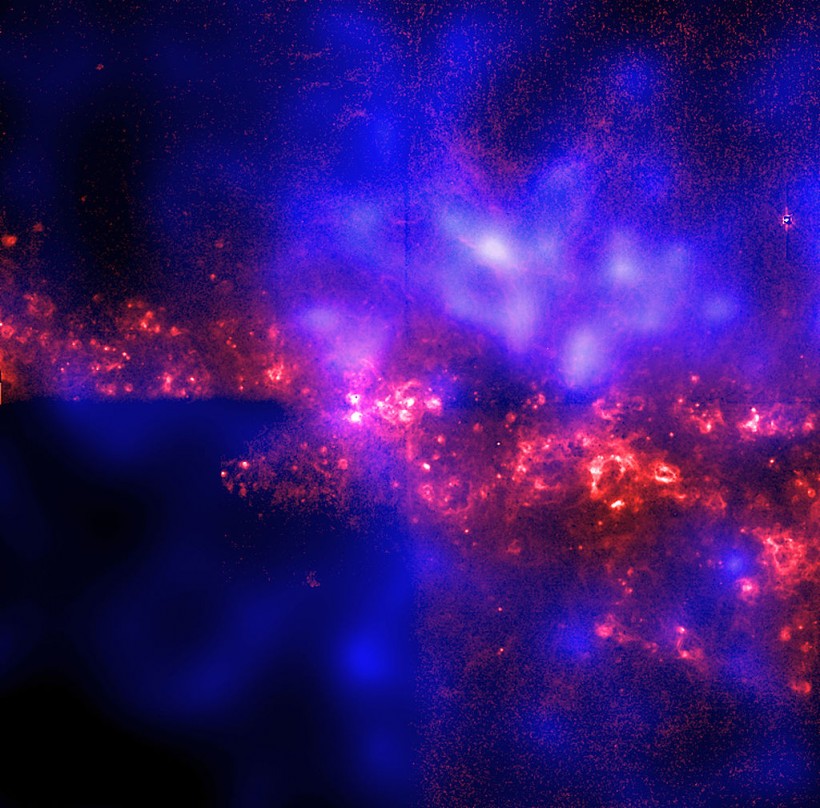
(Photo : Photo Courtesy of NASA/Getty Images)
Astronomers observed a rare cosmic explosion that resulted from the collision of stars within a black hole that provides crucial information about gamma-ray bursts.
Astronomers discovered a rare cosmic collision of stars within a black hole that could provide crucial information regarding gamma-ray bursts.
The cosmic explosion, known as GRB 211211A, created a wealth of heavy elements, such as gold and platinum, and lasted for roughly a minute. Gamma-ray bursts are what experts consider one of the strongest and brightest explosions in the entire universe. These events can range from a few milliseconds to several hours in length.
Rare Cosmic Explosion
The length of the cosmic event suggested that the burst was caused by the explosion of a massive star as it died in a supernova. However, the aftermath of the gamma-ray burst was faint and faded faster than the ones that are created by supernovas. Astronomers who were analyzing the event also observed an excess of infrared light.
An assistant professor of physics and astronomy at Northwestern University's Weinberg College of Arts and Sciences, Wen-fai Fong, said that there were a lot of objects in the night sky that faded quickly, as per CNN.
Fong, who is also a senior author and co-author of one of four studies detailing the event published on Wednesday in the journal Nature Astronomy, added that they image a source in different filters to obtain color information. This then helps them to determine the identity of the source.
In this particular case, the color red prevailed, while the bluer colors faded more quickly, which were signature signs of a kilonova. These types of events can only occur from neutron star mergers.
According to ARS Technica, a postdoc at Los Alamos National Laboratory, Eve Chase, who is a co-author of the study, said that the detection breaks the standard idea of gamma-ray bursts. Previously, astronomers assumed that neutron star mergers are only capable of producing short gamma-ray bursts.
Read Also: Scientists May Have Figured Out a Way To Detect Elusive Dark Matter Using Quantum Computers
Gamma-Ray Bursts
The first gamma-ray burst was observed in the late 1960s, with help from the launch of the Vela satellites by the United States. The satellites initially sought to detect telltale gamma-ray signatures of nuclear weapons tests in the wake of the Nuclear Test Ban Treaty in 1963, which was signed with the Soviet Union.
Several months ago, a powerful gamma-ray burst was observed by multiple space-based detectors passing through our solar system. The finding sent astronomers worldwide scrambling to point their telescopes to that particular portion of the universe in order to collect valuable data on the event and its afterglow.
There are two types of gamma-ray bursts that astronomers know of; short and long. Classic short-term bursts only last for less than two seconds. Previously, they were thought to only occur from the merging of two ultra-dense objects, such as binary neutron stars.
Long-term bursts, on the other hand, can last anywhere from a few minutes to several hours and are believed to occur when a massive star goes supernova.
Scientists said that the latest burst provided insight that allowed them to call gamma-ray bursts the main factories of gold in the universe. An assistant professor at the University of Birmingham, Dr. Benjamin Gompertz, said that the research had exciting implications for future research, BBC reported.
Related Article: SKA Observatory: Construction Starts on World's Largest Telescope To Study the Universe's Secrets








